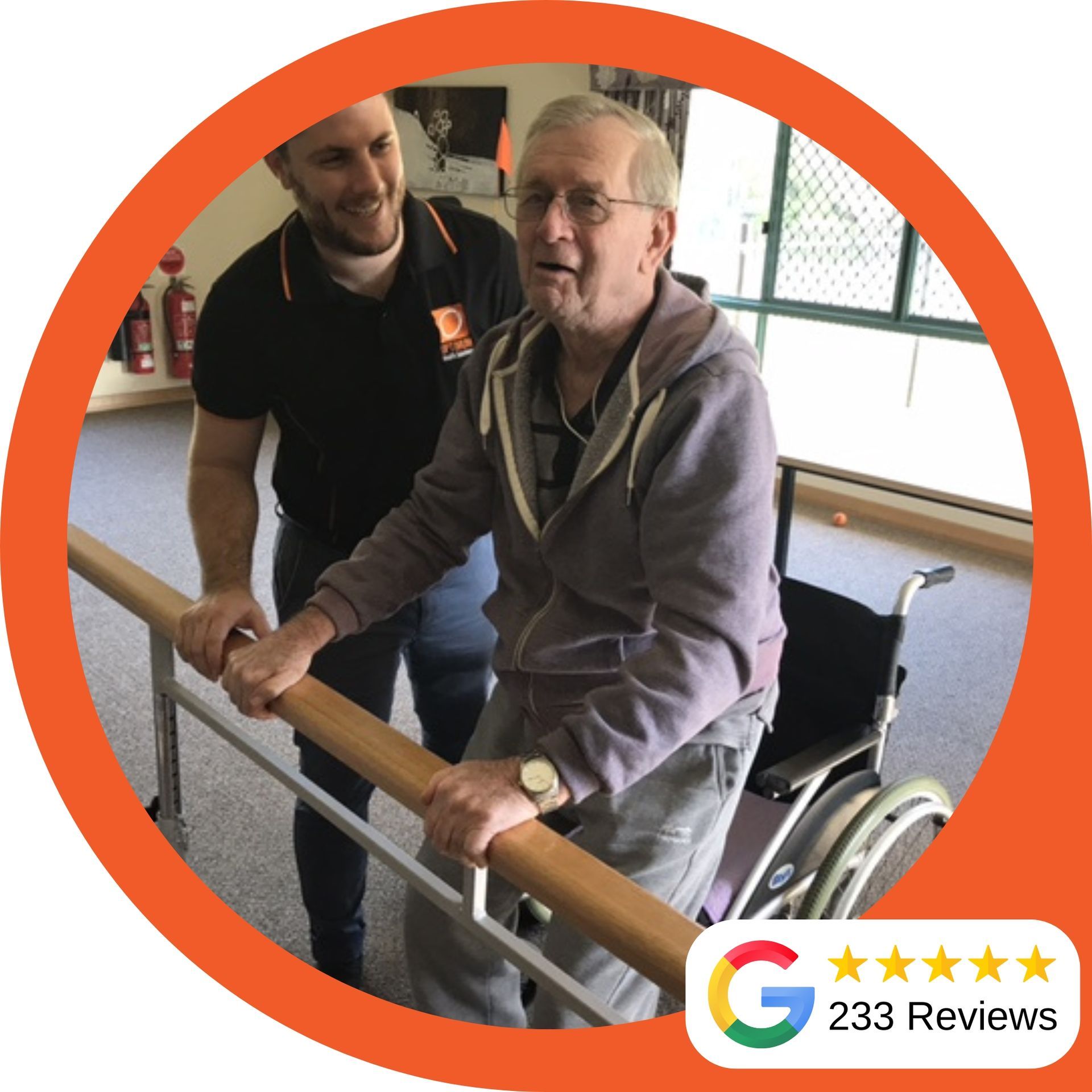Clinical Pilates For Back Pain
If you suffer from back pain
Pilates can be extremely beneficial for you. You can expect lots of different health benefits; from reduced (or eliminated) pain and discomfort from your injury to just generally being able to get about your day with more balance, co-ordination and comfort.
It’s a great way to improve your overall quality of life.
However, it needs to be very specific to you and your injuries (not just a general group program where everyone does the same thing).
So, What is clinical Pilates?
Clinical Pilates is a form of core stabilisation and segmental exercise that focuses on restoring normal movement patterns, correcting posture, improving core stability and control. It encompasses exercises targeted to balance, strength, flexibility, pelvic floor and diaphragmatic breathing. The Pilates Method was developed by Joseph Pilates in the early 20th century in Germany and has been utilised for many years to reduce pain and improve core strength.
Currently, Clinical Pilates is used to treat a variety of injuries (particularly those of the back, hips, shoulders and neck).There is a lot of scientific evidence that supports the use of clinical pilates in the management of people with injuries, particularly with low back pain and back related injuries.
Overall, Clinical Pilates focuses on the retraining of the deep spinal stabilisers and core musculature (TrA and multifidis) to reduce pain, discomfort and improve your posture, strength and flexibility.
Differences between regular Pilates and clinical Pilates
Regular Pilates is conducted by a Pilates instructor, whereas Clinical Pilates is prescribed and supervised by a Clinical Pilates trained Physiotherapist or Exercise Physiologist (E.P.).
This difference is very important because a Physiotherapist or E.P., unlike a Pilates instructor, has an in-depth knowledge of injury, pathology, bodily function, healing and movement patterns. This knowledge allows an Exercise Physiologist to assess you and determine which exercises will be safe and effective for you.
This becomes especially important if you have any history of injury
Whether it be low back pain, whiplash or osteoporosis there will be certain exercises which will help you and others that may aggravate your pain; this is something that only a Physiotherapist or Exercise Physiologist is trained to do. Like any form of exercise, Pilates can be wonderful for fitness, however still has the potential to cause injury or pain if not prescribed and monitored in the correct way.
If you are interested in commencing Pilates for your injury, core weakness or postural imbalance, it is essential to have a review with an Exercise Physiologist to assess the suitability of a core stability program for you.
Clinical Pilates is now available in Ballina. Call Chantal on 1300 871 249
to book a free initial appointment (10 free available).
Chantal Burness, AEP, Clinical Pilates Instructor.
Optimum Allied Health – Ballina

Back pain isn’t just an occasional nuisance—it can be life-altering. One day, it’s a dull ache after sitting too long; the next, it’s a sharp, shooting pain that makes bending or walking feel impossible. Some people can pinpoint exactly when it started—maybe from lifting something heavy, sleeping in an awkward position, or even an old injury that never fully healed. Others find that their pain crept up over time, slowly becoming part of their daily life. The causes of back pain vary. It could be poor posture, weak muscles, a slipped disc, arthritis, or even nerve compression. While some discomfort eases on its own, persistent pain is a sign something needs attention. Physiotherapy treatment for back pain focuses on identifying the root cause, relieving pain, and strengthening the body to prevent future problems. Common Types of Back Pain Back pain comes in many forms. Understanding what type you’re dealing with is the first step toward finding the right solution. Lower Back Pain (LBP) Lower back pain is one of the most common complaints and can be caused by: Muscle strain from improper lifting or sudden movements. Weak core muscles that don’t properly support the spine. Herniated or bulging discs pressing on nerves. Sitting too much, leading to stiffness and poor circulation. Physiotherapy for lower back pain helps by releasing muscle tension, improving posture, and strengthening the muscles—keeping the spine stable. Upper & Mid-Back Pain Pain in this area often results from: Hunching over a desk or looking down at a phone for too long. Muscle imbalances that pull the spine out of alignment. Tension from stress that causes knots and tightness. A physiotherapist works on stretching and strengthening exercises, manual therapy, and postural corrections to relieve strain and improve spinal mobility. Sciatica & Nerve Pain If you’ve ever felt a burning or tingling sensation running from your lower back down one leg, you might be dealing with sciatica. It happens when the sciatic nerve gets compressed, usually due to: A herniated disc pressing on the nerve. Tight muscles in the lower back and hips. Spinal stenosis reducing space for the nerve to pass through. Physiotherapy helps by releasing pressure on the nerve, improving spinal alignment, and reducing inflammation. Herniated & Bulging Disc Pain Spinal discs act as shock absorbers, but when they slip out of place, they can press on nearby nerves, causing pain, weakness, or numbness. Treatment focuses on: Core exercises to support the spine. Gentle spinal mobilisation to reduce nerve irritation. Stretching and movement retraining to prevent re-injury. Degenerative Disc Disease Over time, spinal discs wear down, losing flexibility and hydration. This can lead to chronic stiffness and discomfort. While it’s a natural aging process, physiotherapy helps by: Keeping the spine flexible to reduce pressure on affected areas. Strengthening muscles to provide better support. Teaching movement techniques to ease daily strain. Spinal Stenosis A narrowing of the spinal canal puts pressure on the nerves, leading to pain, tingling, or weakness in the back and legs. Physiotherapy treatment involves: Postural adjustments to relieve pressure. Strength-building exercises to improve stability. Stretching to keep the body moving smoothly. Sacroiliac (SI) Joint Pain The SI joint connects the spine to the pelvis. If it becomes inflamed or misaligned, it can cause deep lower back or hip pain. Physiotherapy focuses on stabilisation exercises, gentle joint mobilisation, and muscle activation techniques. Acute vs. Chronic Back Pain Acute pain comes on suddenly—often from an injury—and usually improves within a few weeks. Chronic pain sticks around for three months or longer, sometimes without an obvious cause. Physiotherapy treatment for back pain can help manage both. How Physiotherapy Helps with Back Pain The focus of physiotherapy is not just to manage pain, it’s also about helping your body move better and function without discomfort. Reducing Pain & Inflammation Manual therapy, dry needling, and heat or cold applications can relax muscles and ease tension. Fixing Posture & Spinal Alignment A lot of back pain comes from poor movement habits. Physiotherapists teach proper posture and ergonomic adjustments to reduce daily strain. Strengthening Core & Back Muscles A stronger core takes pressure off the lower back, reducing stress on joints and discs. Improving Flexibility & Mobility Stiff muscles and joints make pain worse. Stretching, mobility drills, and hands-on therapy keep the back moving freely. Preventing Future Problems Physiotherapy helps you build strength and awareness so pain doesn’t return. Avoiding Surgery Through Rehabilitation A structured physiotherapy program can help many people avoid invasive procedures by strengthening weak areas and retraining movement patterns. Restoring Everyday Function Pain shouldn’t stop you from lifting groceries, tying your shoes, or playing with your kids. Physiotherapy makes these movements feel easier and more natural. Physiotherapy Techniques for Back Pain So, what is the best physiotherapy treatment for back pain? A mix of approaches usually works best. Manual Therapy (Massage & Joint Mobilisation) Hands-on techniques release muscle knots, improve circulation, and restore movement. Soft Tissue Therapy & Myofascial Release These methods help break up tight muscle fibres and improve mobility. Dry Needling for Pain Relief Trigger point therapy with fine needles relaxes muscles and improves blood flow. Heat & Cold Therapy for Inflammation Heat relaxes muscles and increases circulation. Cold numbs pain and reduces swelling. Ultrasound Therapy for Healing Uses sound waves to stimulate deep tissue repair. TENS (Transcutaneous Electrical Nerve Stimulation) Mild electrical pulses block pain signals and reduce discomfort. Hydrotherapy for Low-Impact Movement Water-based therapy is gentle on joints while improving mobility. Kinesiology Taping for Muscle Support Provides stability while allowing natural movement. Finding a Physiotherapist in Australia If you’re looking for physiotherapy in Coffs Harbour , Grafton , Ballina , Tweed Heads , Casino , Lismore and the Gold Coast we can help. What to Look for in a Physiotherapist Experience treating your specific condition. A hands-on, personalised approach. A balance of pain relief and long-term prevention. Medicare & Private Health Insurance, NDIS Coverage. Telehealth & Home Physiotherapy Options Telehealth consultations offer expert advice remotely. Home visits bring treatment to those who can’t attend a clinic. Take Back Control of Your Movement Living with back pain can feel exhausting, but it doesn’t have to be your reality. The right physiotherapy treatment for back pain can help you move freely, build strength, and reduce discomfort—not just for now, but for the long run. Small, consistent improvements lead to lasting relief, giving you the confidence to get back to the activities you enjoy. Take the first step toward a healthier, pain-free life today.

Understanding Vertigo & Its Causes Vertigo isn’t just feeling dizzy—it’s a sensation that your surroundings are spinning, even when you’re standing still. It can range from mildly annoying to completely debilitating. While vertigo itself isn’t a condition, it’s usually a symptom of an underlying issue, such as an inner ear disorder, head injury, or neurological problem. If you’ve ever felt like you were on a rollercoaster while simply standing up, you know how unsettling vertigo can be. It can affect your balance, make everyday activities difficult, and even increase the risk of falls. How Physiotherapy Treatment for Vertigo Helps Physiotherapy treatment for vertigo focuses on retraining your balance system, reducing dizziness, and helping your brain adapt to new movement patterns. It’s a non-invasive, medication-free approach that can make a big difference for people dealing with recurring vertigo episodes. So, how is it done? Pain Reduction & Symptom Management – Targeted exercises can help reduce dizziness and discomfort over time. Improving Posture & Balance – Many vertigo patients develop poor posture to compensate for dizziness. Physiotherapy helps correct this. Strengthening Core & Supporting Muscles – A strong core helps stabilise your movements, reducing sudden vertigo episodes. Restoring Mobility & Confidence in Movement – Many people avoid certain activities due to fear of dizziness. Physiotherapy helps restore confidence in movement. Preventing Recurrence – With the right techniques, you can train your body to react better to vertigo triggers. If left untreated, vertigo can impact your quality of life. Physical therapy for vertigo offers a proactive way to regain control. Physiotherapy Techniques for Vertigo Physiotherapy treatment for vertigo includes targeted techniques designed to reduce dizziness, improve balance, and help the brain adapt to movement. A physiotherapist will assess your condition and recommend the best approach based on your symptoms. Here are some common physiotherapy techniques used to treat vertigo: Canalith Repositioning Maneuvers (Epley, Semont, and Foster Maneuvers) These are designed to treat benign paroxysmal positional vertigo (BPPV), the most common cause of vertigo. The exercises involve specific head movements to reposition loose calcium deposits (canaliths) in the inner ear, restoring normal balance. Vestibular Rehabilitation Therapy (VRT) This customised exercise-based program helps the brain adapt to balance changes caused by inner ear disorders. It often includes: Gaze stabilisation exercises to improve focus. Balance training to reduce dizziness. Habituation exercises to help the brain adjust to vertigo triggers. Brandt-Daroff Exercises A self-managed exercise technique used to reduce vertigo symptoms over time. These involve a series of head and body movements designed to desensitise the inner ear’s response to movement. Balance Training Exercises Many people with vertigo struggle with coordination and balance. Physiotherapy includes targeted balance drills to improve stability and prevent falls. Gaze Stabilisation Techniques If you experience dizziness when moving your head, gaze stabilisation exercises train your brain to focus while in motion. These exercises help your eyes and inner ear work together more effectively. Manual Therapy (Neck Mobilisation & Soft Tissue Techniques) If vertigo is linked to neck tension or cervical spine issues, manual therapy can help release tight muscles and restore mobility. TENS & Ultrasound Therapy These pain-relief techniques aren’t direct treatments for vertigo but can help with related issues like muscle tension, headaches, and stress-related dizziness. Hydrotherapy for Gentle Rehabilitation Water-based physiotherapy provides a low-impact way to retrain balance without putting too much strain on the body. The right combination of these techniques can significantly reduce vertigo symptoms and improve quality of life. Physical Exercises for Vertigo So, what is the best physical exercise for vertigo? The best exercise depends on the cause of your vertigo. For benign paroxysmal positional vertigo (BPPV), the Epley maneuver is often the most effective, helping to reposition inner ear crystals that cause dizziness. If your vertigo is linked to vestibular dysfunction, gaze stabilisation exercises and balance training can help retrain your brain to process movement correctly. A physiotherapist can assess your symptoms and recommend the right exercises to restore balance and reduce dizziness. Physiotherapy vs. Other Treatments for Vertigo When dealing with vertigo, there are various treatment options. Here’s how physiotherapy compares to other common approaches: Physiotherapy vs. Medication – While medication can reduce dizziness in the short term, physiotherapy treatment for vertigo addresses the root cause, making it a longer-lasting solution. Physiotherapy vs. Chiropractic Care – Chiropractors focus on spinal alignment, which may help some cases of vertigo, but physiotherapy directly targets balance and vestibular function. Physiotherapy vs. Surgery – Surgery is rarely needed for vertigo. Physiotherapy provides a non-invasive alternative that can prevent the need for medical interventions. Physiotherapy vs. Osteopathy – Osteopaths work with the musculoskeletal system, but physiotherapy focuses on targeted exercises that help retrain the brain’s response to movement. Physiotherapy vs. Acupuncture – While acupuncture may help relieve stress-related dizziness, physiotherapy actively works to restore balance and mobility. Physiotherapy is one of the most effective long-term treatments for vertigo, with minimal side effects and no need for medication. Finding the Right Physiotherapist in Australia If you’re struggling with vertigo, working with the right physiotherapist is key. Look for: Qualified and Experienced Professionals – Choose someone with experience in vestibular rehabilitation. A Clinic Near You – If you’re looking for a physiotherapist, we offer physio in Coffs Harbour , Grafton , Ballina , Tweed Heads , Casino , Lismore and the Gold Coast . Questions to Ask – Ask your physiotherapist about their experience treating vertigo, how long recovery may take, and what home exercises you can do. Medicare & Private Health Insurance Coverage – Many physiotherapy treatments for vertigo may be covered, reducing out-of-pocket costs. NDIS & Physiotherapy for Chronic Dizziness – If vertigo is part of a chronic condition, NDIS may fund physiotherapy sessions to help with symptom management. Home-Based Physiotherapy & Telehealth Options – If you’re unable to attend a clinic, home visits and online physiotherapy consultations can ensure you still receive the right care. Take Control of Your Vertigo with Physiotherapy Vertigo can be overwhelming, but the right physical therapy for vertigo can make a huge difference. Whether it’s manual therapy, vestibular rehabilitation, or balance exercises, physiotherapy helps retrain your brain and body to function without dizziness. If you’re ready to stop letting vertigo control your life, book a physiotherapy session today. Whether it’s an in-clinic appointment or a mobile service, there’s support available to help you regain confidence in movement.



